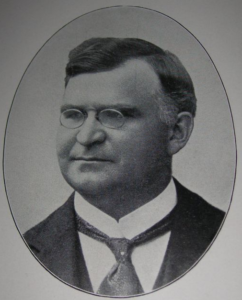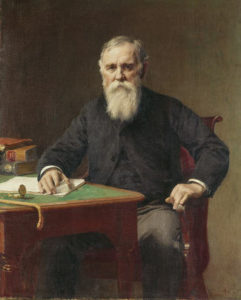The Evolution of In-house Legal Departments
The major change in the modern corporate legal world has been the increase not only in the percentage of lawyers working in-house compared to “big law” employment, but the shift to corporate law departments as the primary legal advisors for their client colleague business leaders and the board of directors. In 1980, only 10% of American lawyers were in-house; today there are more in-house attorneys than large law firm counselors.
In fact, in-house law departments have grown 7.5 times faster than law firms from 1997 to 2017. It is the law department itself, not outside counsel, now in charge of defining and assigning work, generally favoring in-house resources, though often choosing tech-enhanced, alternative legal service providers (“ALSPs”) to accomplish what would have been repetitive but lucrative (i.e., time-consuming) outside counsel associate work less than two decades ago.
The last bastion of outside counsel authority is in litigation, corporate restructuring, and ancillary trial services. Will this change too?
The Evolution of Corporate Law: Three Major Catalysts
To project the limits of in-house growth, it is important to look at the wider historical perspective of American in-house law. Three major catalysts have shaped the evolution of corporate law in the last thirty years, each resulting in an increase in in-house oversight.
The first was the radical shift to in-house counsel pioneered by General Electric in 1987 that widely influenced Fortune 500 corporate practice. When Jack Welch was searching for a new general counsel for GE, he sought out the managing partner and founder of Sidley & Austin’s Supreme Court practice group, Rhodes Scholar Benjamin W. Heineman, Jr.
Heineman had not worked for Welch before, and in fact, was not even a corporate lawyer. But Welch tasked and empowered Ben Heineman to reimagine how a global corporation could better manage legal issues and overall risk. One of Heineman’s first steps as GC was to replace thirty of his thirty-three in-house lawyers. Heineman strategically built out his law department with highly qualified, experienced private practice attorneys, often with specialized expertise.
In this new arrangement, the GE legal department itself would perform complex legal work as company employees, rather than delegating it wholesale to outside firms, as well as proactively working with and educating regulators. This reduced overall legal costs (though upping in-house lawyer salaries) and better managed risk. It also profoundly reduced the inefficiencies of outsourcing decision-making concerning complex, fast-evolving businesses to private practice attorneys removed from the shifting frontlines of commerce. (Transparency was not part of it: business unit leaders at GE did not know that their legal advisor colleagues were often paid more than them!) It was now the General Counsel and her co-worker counselors – not the high-priced, time-charging outside big law partners – that were the strategic legal leaders and advisors to the business units.
The second major shift in the empowerment of corporate counsel was the inevitable integration of business rigor and analytics into law departments. Although the global financial crisis was an accelerant for the rise of legal operations (the third phase of legal service evolution, see below), this intermediary if stealthier second shift in the go-go 90s up until the 2008 financial crisis successfully and irreversibly deployed outsourced talent to assist corporate law departments with due diligence and discovery reviews.
Following the lead of IT outsourcing, much of the “grunt work”, basic, legal analysis was now being accomplished by contracted professionals overseen by both outside counsel and increasingly by the corporate counsel team. This high-volume review, tedious but necessary discovery, and due diligence work was part of associate “training” for litigation and M&A work, or so the law firms insisted. It is crucial to note that litigation decisions and oversight – even those that were nonstrategic – were left untouched. Outside counsel and their legion of associates supervised the external contracted reviewers and hired the court reporters, translators, the tech, and jury consultants. Perhaps the best signifier of this middle phase of expanded corporate authority is the DuPont Legal Model, which enforced a strategy of “convergence” where outside counsel at least agreed to “have skin in the game” by reducing rates but receiving bonuses for successful (and proactive) results.
The third catalyst was the rise of the legal operations department. And while legal operations departments are still blossoming, their origin and scope are significantly different than the prior two shifts. The rise of corporate legal operations is not an attorney-driven appropriation of business ideas; it is a wholesale multidisciplinary, data enhanced re-evaluation and re-tasking of business risk reduction and compliance driven by professionals, often without law degrees.
The first Corporate Legal Operations Consortium was only seven years ago. Its founders (Connie Brenton; Stephanie Corey, and Mary O’Carroll) drew on their Silicon Valley industry experience to focus on continuous, multidisciplinary process improvements that also lowered legal costs. This included strategic deployment of tech and data and leveraged outsourced professionals (not just lawyers) to accomplish more creatively and measurably with less staff and less attorneys.
The initial rise in legal operations was the natural consequence of the new in-house working model with the law departments serving as primary business unit advisors. As inside work increased in scale and complexity, there was a commensurate growth of wide-ranging administrative responsibilities managed by the law department. These important managerial business roles were ill-suited to lawyers without business or tech industry experience. The birth of the legal operations professional not only relieved attorneys of non-core legal and risk advisory roles but allowed for new ways to approach and better oversee the increased workload.
How to Improve In-House Efficiencies with Outside Counsel and External Vendors
The most efficient external lawyer utilization is to engage as outside counsel trial tested litigators or transactional specialists whose knowledge, expertise, and front-line varied legal experience distinguishes them from corporate counsel. But even the appropriate delegation to outside counsel to oversee major or infrequent litigation, regulatory responses, business pivots or acquisitions does not necessarily mean that ancillary support services are best hired or managed by that expensive, specialized legal counsel.
Even eDiscovery – born of the 2006 amendment of Federal Rules of Civil Procedure naming “electronically stored information” as crucial evidentiary data – has shifted in major cases from being controlled exclusively by the law firms to being handled primarily by dedicated in-house professionals, who hire and supervise supplementary eDiscovery vendors in concert with outside counsel.
There are indeed litigation areas still managed by external counsel but ripe for efficiency improvements by shifting to direct enterprise oversight. More law departments are now engaging with litigation consultants at earlier stages of anticipated filings, providing early case assessments that can significantly reduce risks as well as providing data for best outside counsel and venue selection. Similarly, translation services can be more economically engaged and managed by the enterprise team rather than external counsel, whose value is again in direct litigation strategy and delivery.
Finally, businesses with steady litigation demands should seek consolidation and leverage of court reporting services where allowed, rather than relying on outside counsel procurement. However, the case-by-case hiring of these crucial, experienced, independent professionals by law firms limits the advancement of innovation and efficiencies, and inefficiently tasks the law firm with third-party administration. Likewise, state “anti-contracting” laws meant to ensure the independence of freelance court reporters by prohibiting pre-negotiated arrangements unfortunately further fragments the field and complicates the scaling of improvements.
The important protection of court reporter independence and the improved efficiencies of national contracting are not mutually exclusive. If the reporter upholds their duty of impartiality and the national court reporting vendor respects and affirms that individual duty, corporate law departments will gain significant efficiencies by bringing it in-house as well, continuing, if not completing, the longstanding empowerment of the in-house team and refocusing of outside counsel to core strategic legal work.
Conclusion Is the long-running revolution from external “big law” partners to in-house legal as primary legal counselors to corporate units complete? Or are there still opportunities for corporate law departments to improve and economize legal work still managed by outside counsel? While bringing lawyers in house at the enterprise level may have become standard practice across most corporations, it would seem the next aspect of the corporate legal evolution involves leveraging preferred provider relationships with litigation support providers to maximize efficiencies and recognize cost savings across additional legal proceeding services such as court reporting, videography, interpreting and more






